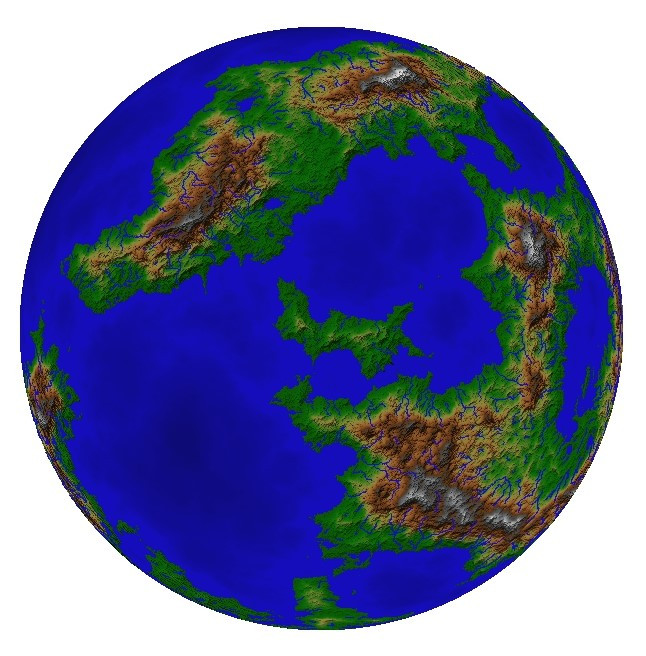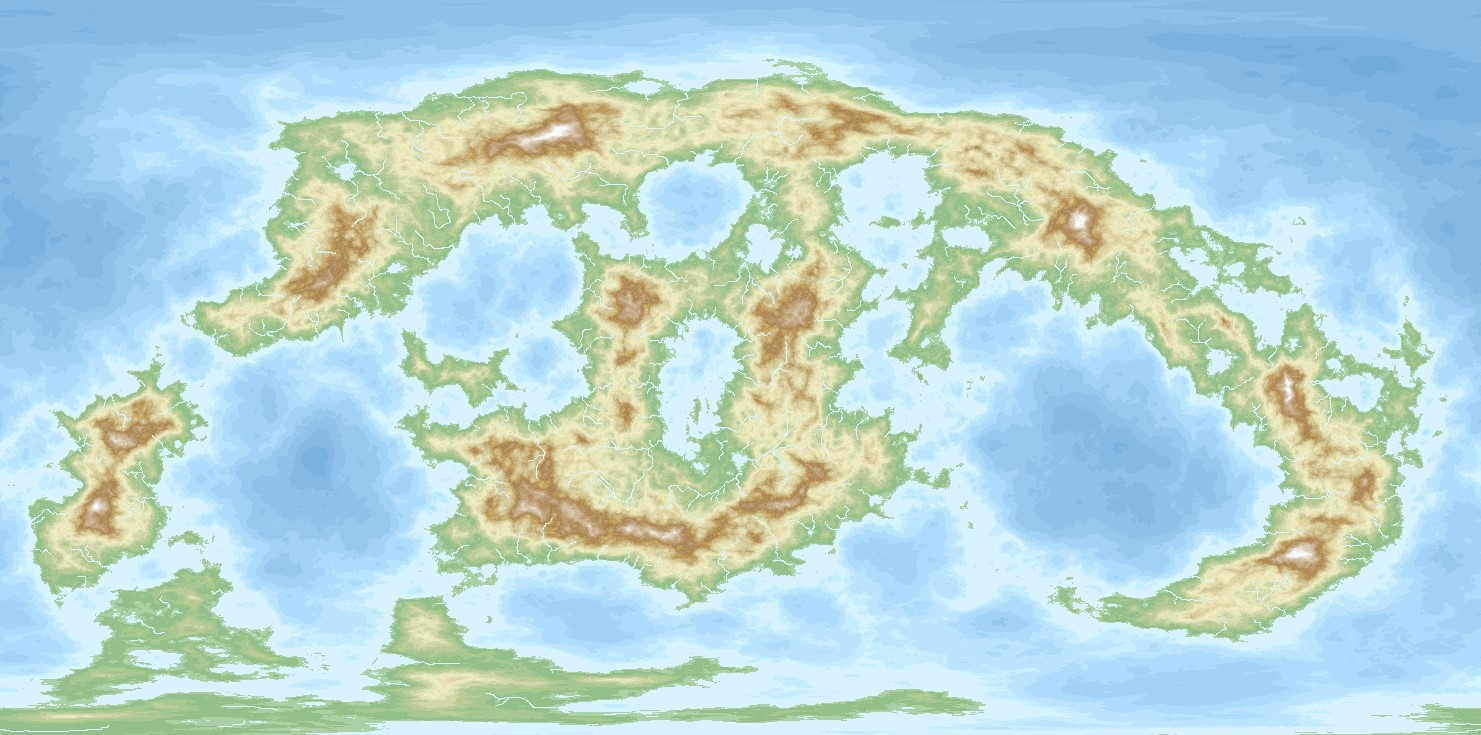Royal Scribe
Royal Scribe
About
- Username
- Royal Scribe
- Joined
- Visits
- 8,805
- Last Active
- Roles
- Member
- Points
- 3,198
- Birthday
- February 5, 1968
- Location
- San Francisco, California
- Real Name
- Kevin
- Rank
- Mapmaker
- Badges
- 16
Reactions
-
I'm hungry for your lore!
What a cool idea for a thread! I've been working on the lore for my world for five or six years, but it's been less than six months that I've finally started to learn Campaign Cartographer, so I don't have a lot of maps to go with the lore.
But here's a map of a Greco-Roman inspired temple (more images in one of my galleries), and the lore to go with it:
This religion is loosely inspired by Greek/Roman mythology -- temples are in that style, and the gods are depicted in art wearing tunics and togas, even though the populace doesn't wear that kind of attire anymore. I will give you a condensed overview. In the pantheon, there are eight major gods who are consorted couples that rule over the four spirit realms: the heavens, the seas, the land, and the underworld. Iliós, the Sun God, is the god of thunder and lightning, battle and war. His consort, Vasilissa, is the goddess of governance, law, and civilization. Together with their adult children they reside in a palace of gold and fire, called Aurinko, which traverses the sky as the sun. The gods of the sea are Thálassi, god of salt water and oceans, and Révma, goddess of freshwater lakes, rivers, and streams. They reside in Helmi, a spherical palace carved from a giant pearl that traverses the oceans of the seas and the skies as the moon. The gods of the land are Thirío, god of animal life on the earth, and Iouloúdia, goddess of plant life. The live in Trypóno, a palace on earth most often shown as being nestled in a hallow of a giant oak tree. The gods of the underworld are Dikastís, the Judge, Adjudicator of Souls, and his wife Éleos, goddess of mercy. They live in Kólasi, an icy, gloomy palace in the underworld. It is said that evil sinners are punished in Kólasi when they die until they are allowed to reincarnate to try again. The spirits of ordinary folks reside in Helmi until they reincarnate. The most heroic are brought to Aurinko to reside with the gods for eternity. (This is a very condensed version that doesn't go into the details of the twelve lesser gods who are their children.)
This temple is meant to worship the entire pantheon. Outside, the barbecue pits are used by temple priests to sacrifice offerings to the gods (great bulls, stags, sheep, and other animals). The gods "feast" on the aromas and then the earthly remains are served to the poor. The pool in front is meant to honor the gods of the sea. The lion statues on the stairs represent the gods of the land, as does the bronze inlaid tree symbol inside the temple. At the peak of the temple is a statue representing the gods of the heavens. In front of the temple there are double rows of eight columns, representing the eight principle deities. There are 17 columns on the sides (in the Greek style of double the front columns plus one.) Inside the temple, which has two giant statues representing Iliós and Vasilissa, there are four niches, each decorated with mosaics representing the four spirit realms: Aurinko, Helmi, Trypóno, and Kólasi. These mosaics are made from luminescent crystals that shed colorful light -- you can see reflections from these mosaics in the second image above.
That's a super condensed synopsis of one of my world's religions (and one of the two principle religions in the main kingdom that will be a starting point). I'm still in "learning and experimenting" mode with CC3 and haven't designed a whole lot of maps to go with the rest of the lore yet.
-
Shout Out to Ralf
I met Anne McCaffrey some years ago and she urged those in attendance to compile and keep a list of names which we could draw upon whenever we needed one. That practice has stuck with me all these years later, and I have lists of thousands of names I can use.
That's what I do, too. Unusual last names are good fodder for fantasy realm names of people or geographic places, though I sometimes tweak the spelling. I keep a notepad list on my phone that jot down names as I encounter them. Every so often, I paste the list into Excel where I can make notations when I use a name.
-
Shout Out to Ralf
I don’t make up languages, but I do rely on existing languages to provide names of people, places, and especially gods. For example, for one religion I might pick Finnish as a commonality, and then when designing the pantheon, I will look up words in Google Translate like thunder, storm, rain, lightning, etc. for a Zeus-like god. If I find a word I like, I will then tweak it a bit to make it unique. For a nature god in the same pantheon, I might look up words for forest, woods, tree, nature, spring, etc. That way, all of the proper nouns will all sound like they came from the same language. Another religion might use Croatian or something else unfamiliar to a majority of English speakers as the base. For the names of ancient things, like the name of the world, I looked to long-dead languages like Sumerian. But that’s not the same as creating a whole new language. I have a book on how to create languages written by the guy who devised the languages in Game of Thrones series on HBO, but I was overwhelmed by it and didn’t pursue it.
-
Map critique
-
[WIP] From Fractal Terrains to Parchment World
The world is very Earth-like, with a circumference of 25,000 miles. I’m out of town without my laptop, just an iPad, so I can do a proper measurement of Lumadair, but I previously calculated that the coastline of Lumadair was a little over 10,000 miles. Here it is on a globe of the full world to put it in perspective.








